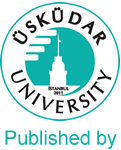Makale
Makale
The Metaverse as Influencer Marketing Platform: Influencer-Brand Collaborations of Parıs Hilton with ‘Superplastic’, ‘Bohoo’, and ‘Levi’s’
Influencer Pazarlama Ortamı Olarak Metaverse: Paris Hilton’un ‘Superplastic’, ‘Bohoo’ ve ‘Levi’s’ ile Influencer-Marka İş Birlikleri
Zaliha İnci KARABACAK,İrem GÜNGÖR
Yıl 6, Sayı 11, Sayfalar:176-199
The Metaverse can be defined as a collection of fictional and virtual worlds that offer different experiences in all areas of life to users represented by avatars with Web 3.0 infrastructure on the basis of artificial intelligence, blockchain, and extended reality technologies. From an economics perspective, the Metaverse turns out to offer a virtual economy, new business models, new products, as well as a new marketing and advertising channel. Taking this into account, brands have started to carry out their influencer marketing activities in the Metaverse environment. With the opportunities offered by Metaverse, brands operate in a market area that tends to expand and become more interactive. In such a market, the interaction between influencers and their followers takes place within the framework of a new business model. In this study, in order to evaluate the influencer marketing activities in Metaverse, the brand and influencer collaborations of Paris Hilton with Superplastic, Boohoo, and Levi’s, were examined with the case study and the semiotic analysis method of Roland Barthes. The analysis results showed that influencers direct their followers from social media to Metaverse platforms. It is also noteworthy that the features such as an individual style and lifestyle that influencers manifest on social media appear to be quite similar in their Metaverse posts. In terms of influencer marketing, Metaverse seems to be more creative and flexible with higher interaction due to the vast opportunities offered as a consequence of using the virtual worlds and avatars on different platforms. When it comes to users, it is observed that followers are given a real-time interaction opportunity in online virtual environments, that content forms are created in a way which is experienced through gamification; and that further opportunities are offered to develop a closer interaction between the user and the influencer avatars, and other possibilities such as purchasing digital assets and winning awards. In the Metaverse, brands appear to benefit from such opportunities as developing parallel marketing strategies between the physical world and the virtual world, preparing effective advertising campaigns with the creative potential of the virtual world, coming up with solutions to difficulties such as payment problems and counterfeiting in influencer marketing by relying on blockchain technology on the basis of Web 3.0 infrastructure, apart from selling digital products and NFTs.
Metaverse, yapay zekâ, blok zinciri, genişletilmiş gerçeklik teknolojileri temelinde Web 3.0 alt yapısıyla, avatarları ile temsil edilen kullanıcılara hayatın her alanında farklı deneyimler sunan kurgusal sanal evrenler topluluğudur. Ekonomi perspektifinden bakıldığında Metaverse; sanal ekonomi, yeni iş modelleri, yeni ürünler, yeni bir pazarlama ve reklam kanalı sunmaktadır. Bu süreçte markaların influncer pazarlama faaliyetlerini Metaverse ortamında gerçekleştirmeye başladığı görülmektedir. Metaverse’ün sunduğu olanaklar dahilinde markalar sınırları genişleyen ve daha interaktif bir pazar alanında faaliyet göstermektedir. Bu pazarda influencer ve takipçi etkileşimi yeni bir iş modeli çerçevesinde gerçekleşmektedir. Bu çalışmada, Metaverse’teki influencer pazarlama faaliyetlerini değerlendirmek amacıyla Paris Hilton’un Superplastic, Boohoo ve Levi’s ile marka ve influencer iş birliği durum çalışması, Roland Barthes’ın göstergebilimsel çözümleme yöntemiyle incelenmiştir. Elde edilen bulgular sonucunda influencerların sosyal medyada mevcut kitlelerini Metaverse platformlarına yönlendirdiği görülmektedir. Influencerların sosyal medyada yansıttıkları stil ve yaşam tarzı gibi özelliklerinin Metaverse paylaşımlarında da benzerlik gösterdiği dikkati çekmektedir. Influencer pazarlama açısından Metaverse’teki farklı platformlardaki sanal dünyaların ve avatar kullanımının sunduğu imkanlar doğrultusunda daha yaratıcı, esnek, yüksek etkileşimin gündeme geldiği görülmektedir. Kullanıcı bağlamında, takipçilere çevrimiçi sanal ortamlarda gerçek zamanlı etkileşim fırsatı sağlandığı, oyunlaştırılmayla deneyimlenen içerik formları oluşturulduğu, influencer avatarı ile kullanıcı avatarına yakın etkileşim olanağı tanındığı ve dijital değer satın alma ve ödül kazanma gibi fırsatlar yaratıldığı gözlemlenmiştir. Metaverse’te markalar açısından ise fiziksel dünya ve sanal dünya arasında paralel pazarlama stratejileri geliştirildiği, sanal dünyanın yaratıcı potansiyeli ile etkili reklam kampanyaları hazırlandığı, influencer pazarlamada karşılaşılan ödeme sorunları ve sahtecilik gibi zorluklara Web 3.0 teknolojik alt yapısı ile blokzincincir teknolojisiyle çözüm sağlandığı, dijital ürün, NFT satışı gibi imkanların sunulduğu sonucuna ulaşılmıştır.

